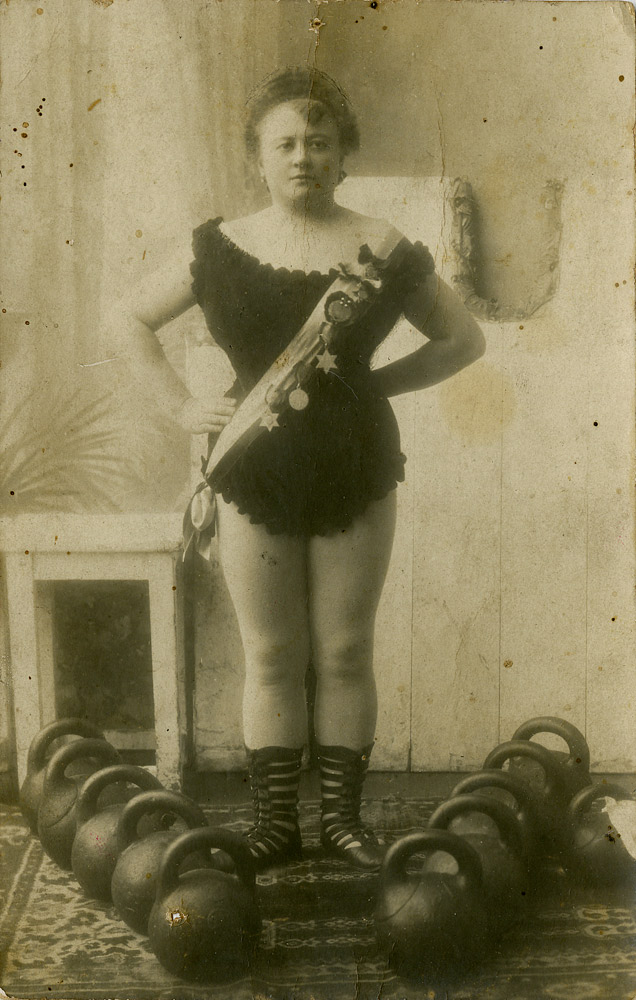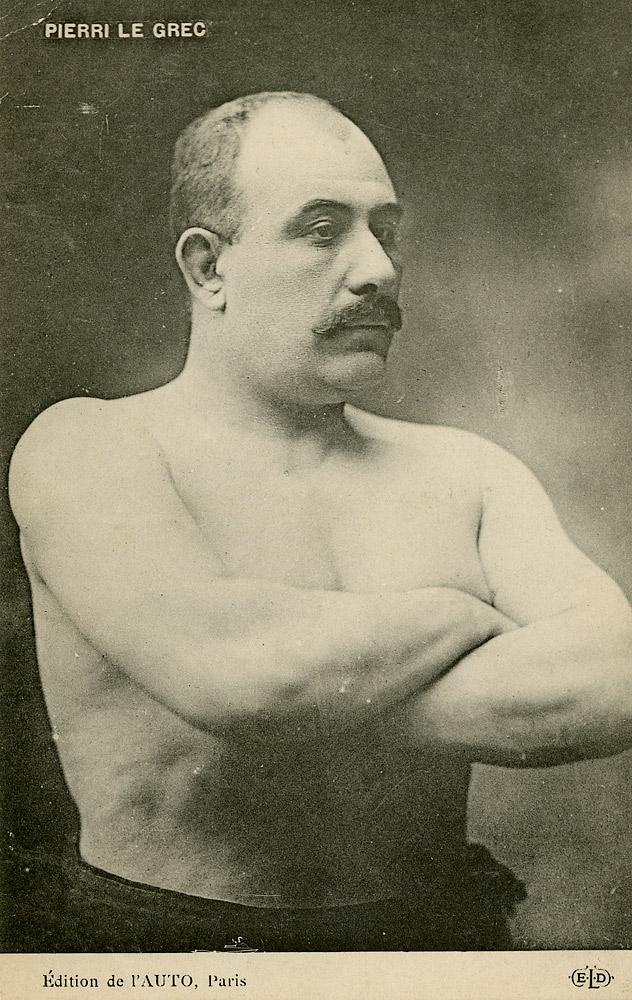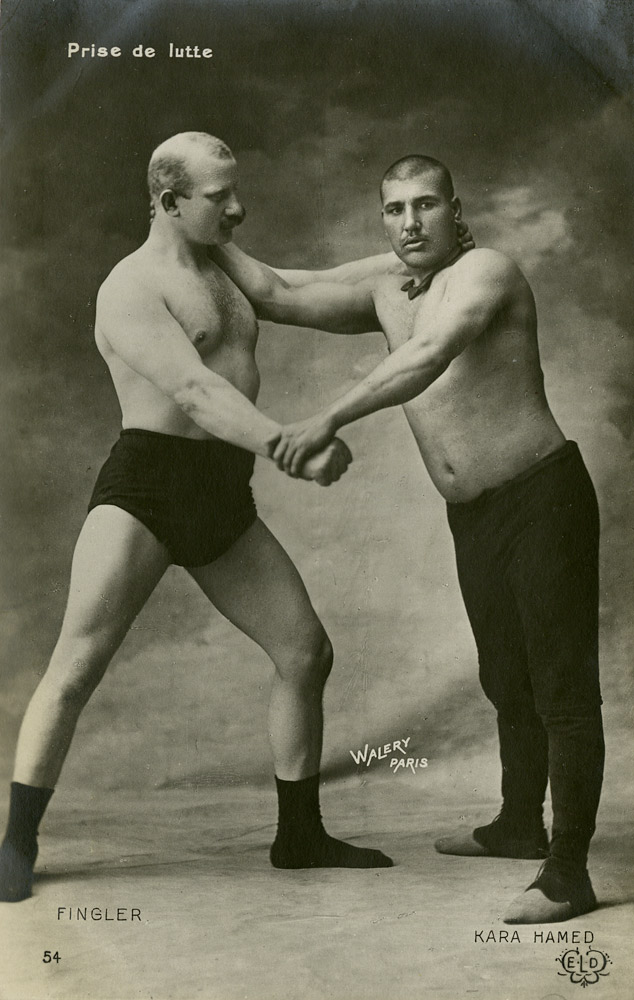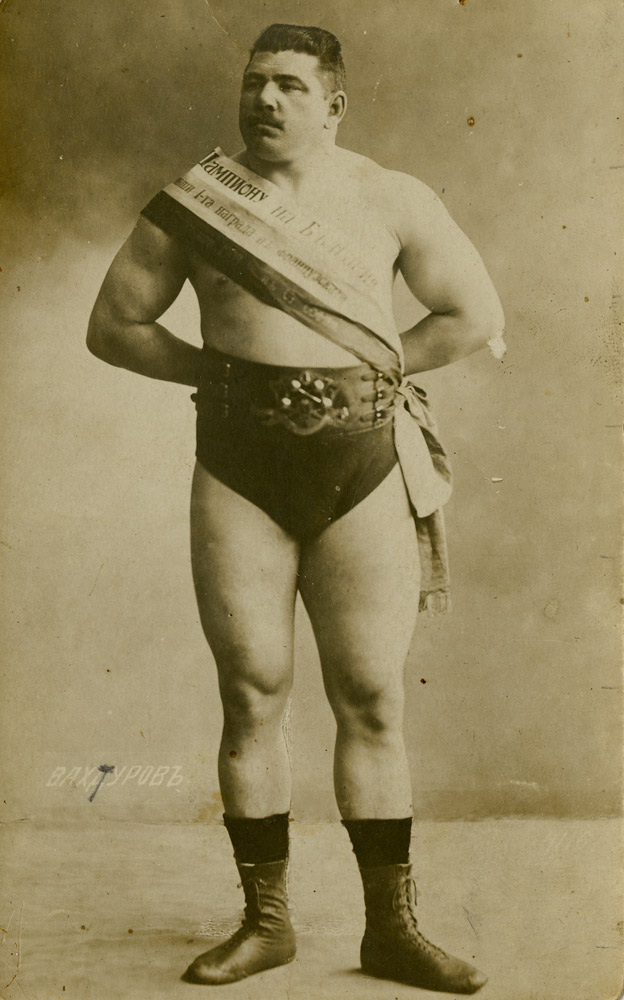
In the years leading up to World War I, wrestling enjoyed a golden age in Europe and America, as the grapplers and men of strength who toured in the traveling road shows and carnivals of the 19th century became huge stars of the ring. Like today’s WWE and its imitators, the rules of the bouts were fluid—drama and performance were valued just as much as winning and losing. Promoted by top impresarios, complete with a narrative of colorful villains and likable heroes, the wrestlers’ matches were held in the largest venues of the day, and the top stars gained huge followings. These cards, collected over fifteen years from flea markets in Europe and the U.S., were sold as souvenirs to the fans who lined up to buy tickets to the event.










More Must-Reads from TIME
- Donald Trump Is TIME's 2024 Person of the Year
- Why We Chose Trump as Person of the Year
- Is Intermittent Fasting Good or Bad for You?
- The 100 Must-Read Books of 2024
- The 20 Best Christmas TV Episodes
- Column: If Optimism Feels Ridiculous Now, Try Hope
- The Future of Climate Action Is Trade Policy
- Merle Bombardieri Is Helping People Make the Baby Decision
Contact us at letters@time.com